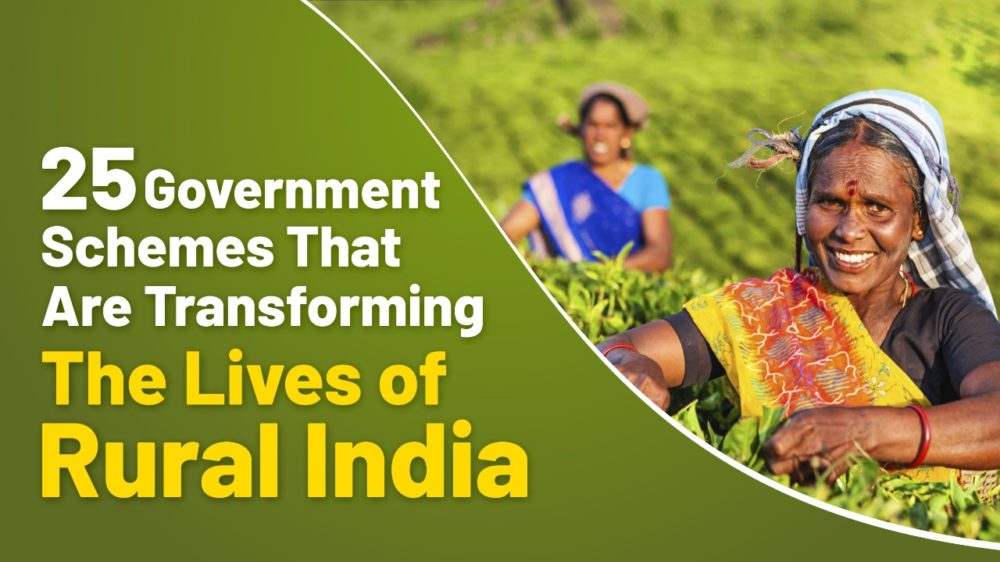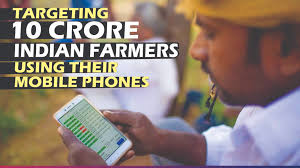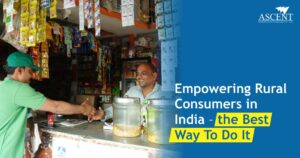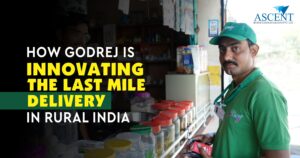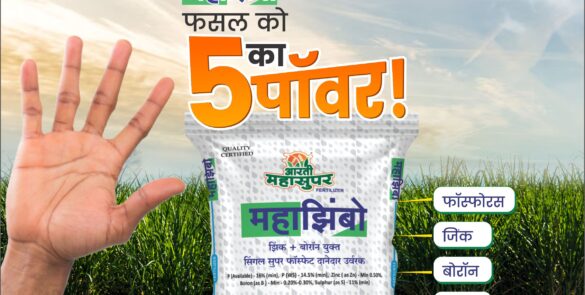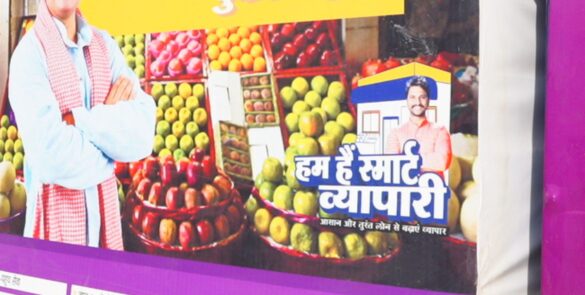[vc_row][vc_column][vc_column_text]
Introduction
Over the years, the Indian government has introduced several schemes for rural India and rural marketing in India that have helped transform the lives of rural people and contributed to the country’s economy. The government’s multipronged schemes have helped eradicate poverty by increasing livelihood opportunities, providing a social safety net, and developing infrastructure for growth. This has improved the quality of life in rural India and corrects developmental imbalances, aiming to reach out to the most disadvantaged sections of society.
Let’s take a look at important government schemes for rural India.
Government Schemes for Rural India:
- Annapurna Scheme:
In 2000-2001, the Ministry of Rural Development established the scheme. Indigent elderly adults aged 65 and over who are qualified for an old-age pension under the National Old Age Pension Plan (NOAPS) but do not receive it are covered by the scheme, which provides 10 kg of food grains per person per month at no cost.
The National Social Assistance Programme, which includes the National Old Age Pension Scheme and the National Family Benefit Scheme, was transferred to the State Plan in 2002-2003. The funds for the transferred scheme are released by the Ministry of Finance as Additional Central Assistance (ACA) to the State Plan, giving states the necessary flexibility in selecting recipients and implementing the scheme. Foodgrains are distributed to state governments based on existing guidelines at BPL rates.
Benefits:
- Breakfast, lunch, and dinner are all provided at a heavily subsidised rate by the state government.
- The Annapurna restaurant will be positioned in the most visible areas of cities, allowing users to take advantage of the scheme’s benefits at a reduced cost.
- The government intends to ensure that all poor people have access to low-cost, high-quality foods.
- Breakfast will be served for Rs. 3, and a lunch or supper plate will be available for Rs. 5. The government makes certain that all poor people have access to low-cost, high-quality foods.
- Breakfast will be provided from 7 a.m. to 10 a.m. and will feature kachori, idli, and sambhar, pakora, poha, channa bund, and butter bund. People can get six pieces of chapatis or flatbread, curry, arhar dal with rice, veg biryani, and salad from 12 p.m. to 3 p.m. on the lunch and dinner menus. The menu may change depending on the day’s dinner.
2. Coir Udyami Yojana (CUY):
This is a credit-linked subsidy scheme for coir units with a project cost of up to Rs.10 lakhs plus one cycle of working capital not exceeding 25% of the project cost. Subsidies will not be considered for working capital.
The scheme’s main goal is to help the country’s coir industry develop sustainably, and it falls under the Ministry of MSME’s purview.
Benefits:
- The maximum cost of a coir project under the Coir Udyami Yojana is Rs. 10 lakh, which does not include working capital.
- The Central government has launched a scheme to establish micro and small-scale coir units across the country.
- Initially, the applicant is only required to pay 5% of the project cost.
- The government will provide a 40% subsidy on the project cost to the applicant.
- The remaining 55% of the project cost is financed through a loan with favorable terms.
- The project cost covers every type of capital purchase. On the other hand, working capital is not taken into account for the loan and subsidy.
- Deen Dayal Upadhyaya Gram Jyoti Yojana (DDUGJY):
The Deen Dayal Upadhyaya Gram Jyoti Yojana is an Indian government scheme that aims to provide rural India with a reliable power supply. The system is named after political thinker Deen Dayal Upadhyaya and is abbreviated as DDUGJY. The scheme aims to separate feeders (agricultural and residential) and boost transmission and distribution infrastructure. Rural electrification is frequently seen as the rural economy’s backbone. In rural India, the government also intends to install electricity meters at all levels. The government of India intends to invest Rs.756 billion towards rural electrification as part of this initiative.
Benefits:
- Agriculture and non-agriculture feeds are separated.
- Sub-transmission and distribution infrastructure in rural areas, including metering of distribution transformers, feeders, and consumers, are being strengthened and expanded.
- Rural electrification in accordance with CCEA permission in order to meet the RGGVY goal.
- To provide speedy electrification, feeder separation, and infrastructure strengthening in rural areas.
- For a smooth and quick deployment of electricity, it is vital to monitor the development closely.
- Deen Dayal Upadhyaya Grameen Kaushalya Yojana:
According to Census 2011, India’s rural areas have 55 million prospective employees between the ages of 15 and 35. At the same time, by 2020, the world is anticipated to be short 57 million jobs. This gives India a once-in-a-lifetime opportunity to turn its demographic surplus into a demographic dividend.
The Ministry of Rural Development is implementing DDU-GKY to help push the national strategy for inclusive growth by increasing rural youth’s skills and productive capacity from low-income families. The lack of formal education and marketable skills are among the obstacles limiting India’s rural poor from participating in the modern market. DDU-GKY fills this void by sponsoring training projects held to international standards, focusing on placement, retention, career advancement, and international placement.
Benefits:
- DDU-GKY collaborates with skill partners, regulatory organizations, educational institutions, and commercial and public organizations to ensure good transformation for rural children and their families.
- Provide specialized training hours for basic computers, spoken English, and soft skills in residential and non-residential campuses, using industry-standard techniques.
- At least 70% of the project’s target trainees would be placed with a minimum monthly wage of Rs. 6000.
- Organizes a job readiness training program to guarantee that candidates are ready to function as soon as they join a company.
- Benefits to trainees include a free uniform, course materials, and, in the event of a residential program, even accommodation and boarding.
- Salary top-ups every month for 2-6 months after placement, depending on placement area.
- At training centers, each candidate receives a Tablet PC.
- Digital India:
The Indian government initiated the Digital India scheme to make government services available to residents electronically by improving online infrastructure and increasing internet connections. It also intends to empower the country in the field of technology digitally and digital marketing. On July 1, 2015, Prime Minister Narendra Modi launched the campaign.
Benefits:
- Electronic transactions related to e-governance are on the rise.
- Under the Bharat Net program, a 2, 74,246-kilometer optical fiber network has connected over 1.15 lakh Gram Panchayats.
- Under the Indian government’s National e-Governance Project, a Common Service Center (CSC) is established to give access to information and communication technology (ICT).
- The creation of digital communities with well-equipped facilities including solar lighting, LED assembly, sanitary napkin production, and Wi-Fi choupal.
Internet data is a crucial tool for service delivery, with 64 percent of urban residents having access to the internet.
- Gramin Bhandaran Yojana:
Gramin Bhandaran Yojana is a capital investment subsidy plan for rural warehouses or godowns for storing farm produce. The program is designed to help farmers expand their holding capacity. By avoiding distress sales, this could lead to the selling of products at profitable prices.
Benefits:
- To assist farmers in storing farm products, processed farm produce, and agricultural inputs, build scientific storage capacity with related facilities in rural areas.
- Improve the marketability of agricultural output through encouraging grading, standardization, and quality control.
- Provide the option of pledge finance and marketing credit to avoid distress sales just after harvest.
- Facilitate the construction of a nationwide warehouse system for agricultural goods housed in such warehouses to build a strong agricultural marketing infrastructure in the country.
- Encourage the private and cooperative sectors to invest in the country’s storage infrastructure to boost agricultural investment potential.
- Mahatma Gandhi National Rural Employment Guarantee Act:
The MGNREGA scheme guarantees a minimum level of employment to India’s rural people. The scheme aims to give underprivileged people the opportunity to work and earn a living to provide their families’ fundamental needs. Every rural household in India should receive a minimum of 100 days of paid employment every year under the MGNREGA scheme. As a result, the MGNREGA scheme allows rural households to work and earn a living. Such households can demand and receive work from the government and be compensated for their efforts.
Benefits:
- By offering economic possibilities, social protection for the most vulnerable individuals in rural India is provided.
- Poor people’s livelihood security is enhanced by constructing long-term assets, improved water security, soil conservation, and increased land productivity.
- Drought-resistance and flood-control in rural India.
- Through the processes of rights-based legislation, the socially disadvantaged, particularly women, Scheduled Castes (SCs), and Scheduled Tribes (STs), are empowered.
- Converging multiple anti-poverty and livelihoods efforts to strengthen decentralized, participatory planning. Strengthening Panchayati Raj Institutions to deepen democracy at the grassroots.
- Improving governance’s openness and accountability.
8. PM Ujjwala Yojana:
The use of LPG is more common in India’s urban and semi-urban areas. The majority of the rural people, as well as BPL families, continue to cook their meals on fossil fuels. The use of fossil fuels puts the women in these families at risk of major health problems. An open fire in the kitchen, according to specialists, causes as much damage as smoking 400 cigarettes in an hour.
Children’s respiratory problems are also caused by indoor air pollution. Air pollution and deforestation are also consequences. Under the leadership of Hon’ble Prime Minister Shri Narendra Modi, the Ministry of Petroleum and Natural Gas launched the Pradhan Mantri Ujjwala Yojana (PMUY) in May 2016 to solve the above issue.
Benefits:
- BPL families would receive 5 crore LPG connections as part of the scheme.
- For each LPG connection provided to BPL families, financial assistance of Rs.1,600 will be provided.
- For the stove and refill costs, EMI facilities will be provided (Interest-free loan).
- The government would cover the administrative cost of Rs.1,600 for LPG installation.
- The scheme is a supplement to Prime Minister Narendra Modi’s ‘Give It Up Campaign,’ in which a large number of middle-class households have willingly given up their cooking gas subsidy.
- Pradhan Mantri Gramin Awaas Yojana:
The Pradhan Mantri Gramin Awaas Yojana is the Central Government’s flagship program for providing affordable homes to all. It is aimed at the rural poor, and it will provide pucca dwellings with all necessary amenities, including a sanitary kitchen, to those who live in kutcha houses.
Benefits:
- All beneficiaries are eligible for loans of up to Rs. 70,000 from pre-selected financial institutions. This money will be utilized to construct a permanent home.
- When it comes to repaying this debt, there are certain advantages. For starters, when compared to typical, non-subsidized loans, interest rates will be 3% lower.
- Subsidies are available up to a maximum of Rs. 2 lakh in principle.
- LPG connections are covered under the Ujjwala Yojana, and other vital facilities are also available.
- Houses built in hilly areas will receive more financial aid.
- Pradhan Mantri Kaushal Vikas Yojana:
The Pradhan Mantri Kaushal Vikas Yojna (PMKVY), a flagship scheme of the Ministry of Skill Development and Entrepreneurship (MSDE), was introduced in 2015. The scheme’s main goal is to help Indian youngsters gain access to industry-relevant skill training that will help them earn a better living. Individuals who already have a skill set can be evaluated and certified under the Recognition of Prior Learning program (RPL).
Benefits:
- The program delivers free industry-related skills to worthy candidates who have dropped out of school or college and are looking for work.
- This scheme provides a source of income for the candidate by offering a legitimate certificate and a Skill India card that they may use to find work.
- The government provides financial help and job placement aid to qualified candidates.
- The plan also provides training to the youth to improve their skills and bridge the knowledge-skill gap.
- It is also helpful to the country’s economy because qualified candidates contribute to the country’s economic development.
- Pradhan Mantri Mudra Yojana:
MUDRA (Micro Units Development and Refinance Agency) Loan Scheme under PMMY (Pradhan Mantri Mudra Yojana) is a government of India initiative that provides loans to individuals, SMEs, and MSMEs. The MUDRA Yojana, which Prime Minister Narendra Modi introduced in 2015, is divided into three lending schemes: Shishu, Kishor, and Tarun. These are no-collateral or no-security loans offered by banks and non-bank financial institutions, with payback terms ranging from 12 months to 5 years and adjustable EMIs.
Benefits:
- Shopkeepers, traders, vendors, and MSMEs engaged in manufacturing, trading, and service sector operations are the most common recipients of Mudra loans.
- The Mudra scheme is covered by the Government of India’s Credit Guarantee Schemes.
- The loan amount available can also be used for term loans and overdrafts.
- Mudra loans are available to all non-farm enterprises, i.e., small or micro businesses that generate money.
- People belonging to the SC/ST category can also get a Mudra loan at a lower interest rate.
- Mudra cards can also be used to access the Mudra system.
- Prime Minister’s Employment Generation Programme:
The Prime Minister Employment Generation Programme (PMEGP) is a credit-linked subsidy program established in 2008 to help people find work. You must contribute 5% to 10% of the entire cost under this scheme, and the government will pay a 15-35 percent subsidy if you meet the eligibility criteria. The Khadi and Village Industries Commission, or KVIC, implements PMEGP, which combines two schemes: the Prime Minister’s Rojgar Yojana and the Rural Employment Generation Programme, both of which attempt to achieve the same goals.
Benefits:
- The maximum cost of a project/unit is Rs.25 lakh in the manufacturing sector and Rs.10 lakh in the business/service sector.
- In plain areas, per capita investment should not exceed 1.00 lakhs; it should not exceed 1.50 lakhs in hilly areas.
- Personal contribution of 5% to 10% of project costs.
- Beneficiaries in the general category are eligible for a margin money subsidy of 25% of the project cost in rural areas and 15% in urban areas. The margin money subsidy is 35 percent in rural regions and 25 percent in urban areas for recipients belonging to special groups such as scheduled caste/scheduled tribe/women.
- Rajiv Gandhi Jeevandayee Arogya Yojana:
The Rajiv Gandhi Yojana was established to improve low-income families’ access to quality health care in the state. Beneficiary families in the state will be able to get free medical treatments in 30 different disciplines and 971 operations, treatments, and treatments, as well as 121 follow-up packages under this health insurance system. If the beneficiary family receives treatment at an impaneled facility, the Rajiv Gandhi Jeevandayee Yojana covers all hospitalization expenditures up to a ceiling of Rs. 1.5 lakh. If the medical procedure is approved, even if a recipient under the Jeevandayee Yojana has a pre-existing ailment, they are covered.
Benefits:
- Persons with pre-existing conditions are not required to wait under this program.
- The insurance plan works similarly to a family floater, in that any or all family members can receive free hospitalization up to a maximum of Rs. 1.5 lakh.
- If beneficiaries visit an empanelled hospital from the Rajiv Gandhi Jeevandayee Arogya Yojana hospital list, they will not be charged anything.
- The maximum coverage limit for patients undergoing kidney transplant surgery is Rs. 2.5 lakh.
- The Rajiv Gandhi Jeevandayee Arogya Yojana hospital list includes over 500 hospitals where participants can receive free medical treatment.
- Free follow-up appointments and medical camps are also available to beneficiaries.
- Unlike standard health insurance programs, the Rajiv Gandhi Yojana includes coverage for cosmetic surgery.
- Rashtriya Krishi Vikas Yojana:
The Rashtriya Krishi Vikas Yojana was created to assist the agricultural industry in achieving an annual growth rate of 4%. States had a lot of flexibility and autonomy in creating and implementing programs to encourage investment in agriculture and related industries under the scheme. By establishing the State Agriculture Plan (SAP) and District Agriculture Plans, the program promoted decentralized planning in the agricultural sector (DAPs). The plan was based on agro-climatic conditions, which ensured appropriate technologies and natural resources, thereby meeting local demands.
Benefits:
- Incentivizing all Indian states to increase their allocation to agriculture and related areas.
- RKVY assists in the development of post-harvest infrastructure necessary for agricultural growth and bolstering farmers’ efforts by providing market facilities.
- It will aid in the promotion of private investment in the agricultural sector throughout the United States.
- Rashtriya Swasthya Bima Yojana (RSBY):
The Ministry of Labour and Employment of the Government of India has launched RSBY to give health insurance coverage to families living below the poverty line (BPL). The goal of RSBY is to safeguard BPL households from financial liabilities resulting from medical emergencies that need hospitalization.
Benefits:
The beneficiary will be allowed any in-patient health care insurance benefits that the respective state governments develop depending on the needs of the people/geographic area. However, it is recommended that state governments provide at least the following basic benefits in the package/scheme:
- Unorganised sector workers and their families (up to five people) will be covered.
- On a family floater basis, the total sum covered will be Rs. 30,000/- per annum.
- All covered diseases are treated without charge.
- Expenses for hospitalization, covering the majority of frequent ailments with as few restrictions as feasible
- Pre-existing conditions must be covered.
- Within a total limit of Rs. 1,000 transportation costs (real with a maximum limit of Rs. 100 per visit).
- Roshni: Skill Development Scheme for Tribals:
Some parts of the country have been severely impacted by political unrest. It is difficult for these underserved areas to obtain resources and vocational training. Tribals in certain parts of India struggle to keep up with acceptable economic standards due to a lack of infrastructure and the inability to work with equipment. To help such politically affiliated tribes, the Indian government, in collaboration with the Ministry of Skill Development and Entrepreneurship, launched the Roshni scheme, which trains rural youth in areas affected by Left Wing Extremism (LWE) to develop skills like digital marketing, which in terms will help them in long run.
Benefits:
- The Roshni scheme is a training program that aims to train 50,000 youth in three years and provide 75 percent of those who complete the program with job opportunities in organized sectors across the country.
- Because the scheme aims to empower women, women will make up half of the candidates eligible for Roshni benefits.
- The program includes more than just training; it also includes customized and fully residential training that can last anywhere from three months to a year, depending on the length of the program.
- SABLA:
The Rajiv Gandhi Scheme for Empowerment of Adolescent Girls (RGSEAG) – SABLA was launched by the Indian government’s Ministry of Women and Child Development. This program is a federally funded initiative aimed at empowering adolescent girls through self-development. SABLA is a program that focuses on educational, nutritional, and health needs in order to battle various socio-legal difficulties. SABLA is a scheme that focuses on educational, nutritional, and health needs in order to battle various socio-legal difficulties.
Benefits:
- Adolescent girls should have opportunities for self-development and empowerment.
- Improve their eating habits and overall wellness.
- Promote health, hygiene, nutrition, adolescent reproductive and sexual health (ARSH), as well as family and child care awareness.
- Upgrade home-based skills, life skills, and vocational skills by integrating with the National Skill Development Program (NSDP).
- Adolescent girls who have dropped out of school should be mainstream into formal and non-formal education.
- Sansad Adarsh Gram Yojana:
Saansad Aadarsh Gram Yojana is a rural development initiative that focuses on village development in general, including social growth, cultural development, and spreading motivation among the people for local community social mobilization. On the 11th of October 2014, Prime Minister of India Narendra Modi started the program in honor of Jayaprakash Narayan’s birthday.
Benefits:
- The mission’s main focus was on services that addressed children’s and women’s health, universal vaccinations, and other issues.
- The initiative aims to strengthen the whole health system by coordinating policy efforts across all sectors and expanding preventive, curative, palliative, and rehabilitative services available across the public sector. It oversees all sectors with a focus on providing high-quality service.
- Through capacity building, it improves management.
- Participation of the community.
- Flexible financing procedure for the best use of funds provided.
- Sampoorna Grameen Rozgar Yojana:
The Indian government has created the Sampoorna Grameen Rozgar Yojana to offer rural poor people profitable jobs and food. The government distributes wages and food grain to individuals who fall below the poverty threshold with this program. We’ll take a closer look at the Sampoorna Grameen Rozgar Yojana in this article.
Benefits:
- The Panchayat Raj Institutions will implement the Sampoorna Grameen Rozgar scheme (PRIs).
- A district’s resources will be split in a 20:30:50 ratio among the District Panchayat, Intermediate Panchayat, and Village Panchayat.
- All three tiers of Panchayat Raj Institutions would have access to the funds and food grains provided by the initiative (PRIs).
- a) District Panchayat
- b) Intermediate Panchayat
- c) Village Panchayat
Food grains and 5% of SGRY monies will be kept in the Ministry to be used in the case of acute distress caused by natural calamities or to take preventive measures in flood-affected or chronically drought-affected rural areas.
- Skill Upgradation and Mahila Coir Yojana:
Mahila Coir Yojana (MCY) is a women-focused self-employment program in the coir sector aiming to provide self-employment opportunities for rural women artisans in coir-producing regions. Converting coir fiber into yarn on motorized and electric ratts in rural families provides opportunities for large-scale employment, increased productivity and quality, improved working conditions, and increased revenue. The government is implementing the scheme through the Coir Board as part of its Coir Vikas Yojana.
Benefits:
- Under the Mahila Coir Yojana, provide a 75 percent subsidy on coir yarn spinning ratts, coir processing equipment, machinery, and other things.
- The goal is to instill quality consciousness among workers at all levels and educate them on producing high-quality fiber, yarn, and products.
- Create awareness among coconut growers, businesspeople, and others about the need to establish coir-based units and update existing ones to improve productivity, quality, and profitability.
- Startup India:
PM Narendra Modi spoke about Startup India for the first time on August 15, 2015, at Red Fort in New Delhi. The Indian government launched this campaign as part of a plan to establish over 75 startup assistance hubs around the country.
Benefits:
- To lower the cost of registering a patent.
- The Bankruptcy Code has been updated to ensure a 90-day departure window.
- For the first three years of business, there will be no mystifying inspections or capital gains tax.
- As part of the Atal Innovation Mission, an innovation hub will be established.
- 5 lakh schools would be targeted, with 10 lakh youngsters participating in innovation-related programs.
- To create new methods that will protect startup companies’ intellectual property rights.
- To promote entrepreneurship all around the country.
- To promote India as a global startup hotspot.
- Sukanya Samriddhi Yojna (SSY):
Sukanya Samriddhi Yojana (SSY) is a government-sponsored savings program that began in 2015 as part of the government’s Beti Bachao, Beti Padhao campaign. Guardians can create a savings account for their girl child at an authorised commercial bank or an India Post branch under this initiative.
As of July 1, 2019, SSY accounts offer an interest rate of 8.4 percent. A Sukanya Samriddhi Yojana calculator can help you calculate the profits you’ll get based on the amount you put in and the length of time you spend.
Benefits:
- A parent or guardian can open and operate the account as soon as a girl child turns 10 years old.
- Up to 50% of the balance can be withdrawn to meet the girl’s educational needs after she turns 10 years old.
- Money can be transferred from one authorised bank to another or from a post office to any authorised bank and vice versa.
- This scheme has an interest rate of 8.6% and gives income tax advantages.
- Swachchh Bharat Mission:
On October 2, 2014, the Prime Minister inaugurated the Swachh Bharat Mission to commemorate Mahatma Gandhi’s birth anniversary. The Swachh Bharat Abhiyan aims to provide everyone with access to sanitation services such as toilets, solid and liquid waste disposal systems, village cleanliness, and safe and sufficient drinking water. With the help of proper rural marketing campaigns, the Ministry of Drinking Water and Sanitation carried out the program. By 2019, the Mission wants to treble the toilet growth rate from 3% to 10%.
Benefits:
- Positive impact on the health of rural people.
- Improvement of public toilets
- Toilets have been constructed in all the rural households
- Municipalities have become more sensitive to garbage collection and street cleaning requests.
- Swamitva Yojana:
Swamitva Yojana aims to use modern technologies to compile a database of land ownership in rural areas. The scheme is being piloted by the Union government’s Panchayati Raj ministry and introduced on April 24, 2020, Panchayati Raj Diwas. The Swamitva Yojana aims to close this gap by giving people in villages ownership rights. It is projected to go a long way toward resolving property rights in rural areas and serve as a vehicle for empowerment and entitlement, minimizing social conflict caused by property disputes.
Benefits:
- By mapping all of the village properties, the program will allow for speedy development of rural areas.
- Drones will create a digital map of every property within each Indian village’s geographical boundaries.
- Property cards will be created and distributed to the appropriate owners.
- The scheme would aid in the reduction of property disputes.
- Villagers will be able to obtain bank loans more easily as a result of this.
- It will allow the government to prepare for infrastructural programs in villages more effectively.
- The village’s delimited areas will be delimited using drone survey technology under this plan.
- Training to Rural Youth for Self-Employment (TRYSEM):
This scheme prepares rural youngsters for self-employment. To give training and technical skills to rural adolescents (18-35 years old) from low-income families to pursue self-employment in agriculture, industry, services, and business activities. Training is seen as more than just the acquisition of physical abilities. However, it is also necessary to impart changes in attitude, motivation, and interpersonal skills, among other things. Self-employment is defined as full-time gainful employment that generates enough money to lift a young person’s family over the poverty line.
Benefits:
- TRYSEM was established in all 5000 blocks across the country as the IRDP’s “self-employment for youth” component.
- An identified youth will be placed in a training institution or under the supervision of a master craftsman for a period of time.
- Training duration varies depending on the type of course.
- Trainers are provided with a stipend as well as a toolkit.
- TRYSEM was established in all 5000 blocks across the country as the IRDP’s “self-employment for youth” component.
- An identified youth will be placed in a training institution or under the supervision of a master craftsman for a period of time.
- Training duration varies depending on the type of course.
- Trainers are provided with a stipend as well as a toolkit.
Disclaimer: This ranking is done in alphabetical order
Conclusion:
Agriculture and rural development in India have enormous potential to help the government meet its goal of doubling farmer income by 2022. Millions of farmers and rural women who rely on agriculture and rural activities will have their faith restored in rural marketing thanks to the increased allocation and high credit flow in the budget 2020-21. The government has increased its efforts to create a favourable environment in rural areas for the manufacturing revolution, job development, skill up-gradation, and poverty reduction. These schemes raise the living standards of the most vulnerable groups, notably women living in chronic poverty.[/vc_column_text][/vc_column][/vc_row]

